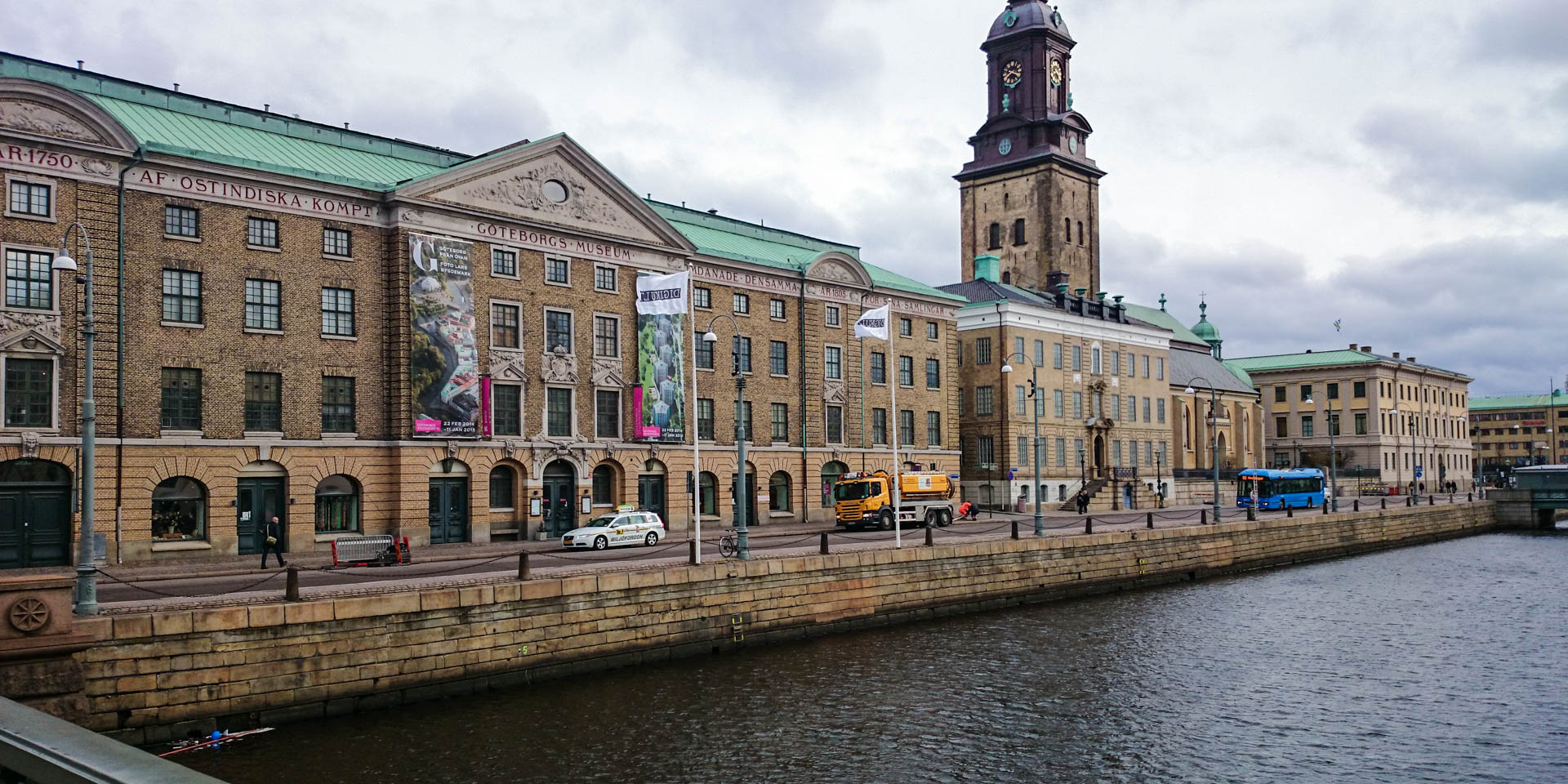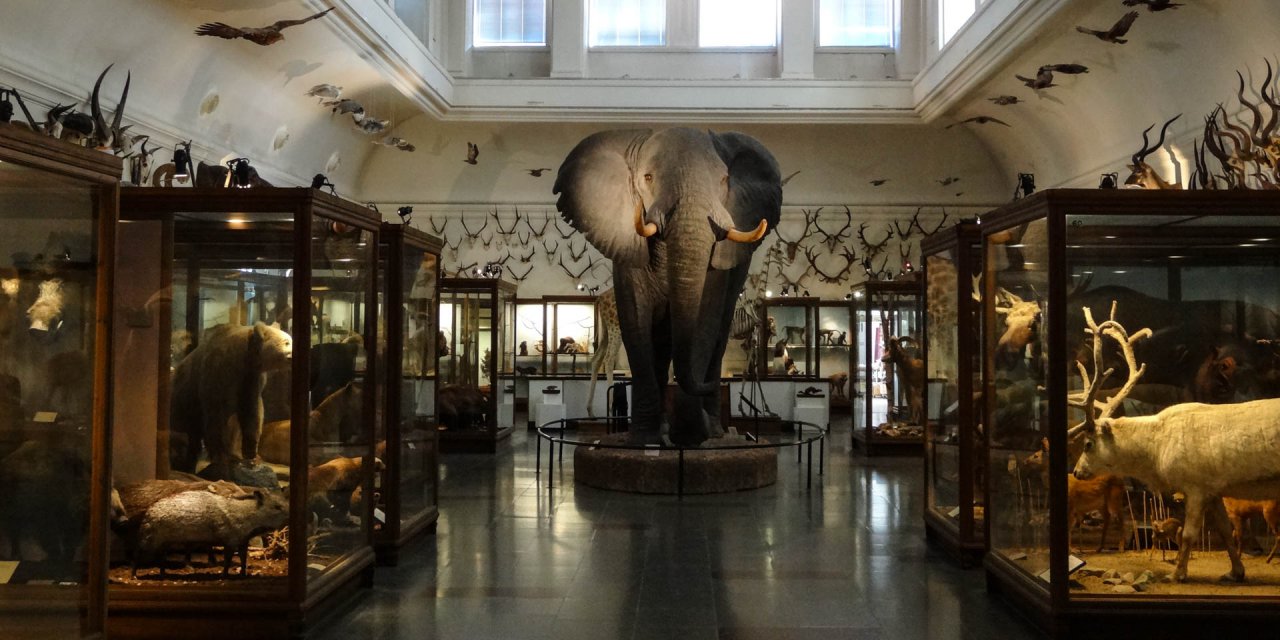

Göteborgs Stadsmuseum
Museum of cultural history in Gothenburg
Göteborgs Stadsmuseum is located in the impressive Ostindiska Huset next to the Stora Hamnkanalen in the centre of Gothenburg and presents the various facets of Gothenburg's city history in its exhibitions.
The Gothenburg museum, located near the Gustaf Adolfs Torg and the German Church, was founded in 1993 by merging a total of five municipal museums – the archaeological museum, the historical museum, the industrial history museum, the theatre history museum and the school history collection of the city of Gothenburg.
With the resulting huge collection of about one million exhibits and about two million photographs, Göteborgs Stadsmuseum has one of Sweden's largest cultural-historical collections. The museum occupies the 18th century four-winged building complex of the Ostindiska Huset, which is the size of an entire street block and was once the impressive headquarters of the Swedish East India Company.
The exhibitions in Göteborgs Stadsmuseum
Accompanied by regularly changing exhibitions on various themes, the museum's eight permanent exhibitions tell the story of the city of Gothenburg and its environs over a period from the first human settlement in the region around 12,000 years ago to the turn of the century.
The exhibition "Forntiden: Spåren Talar" (Ancient times: The traces tell) shows hundreds of archaeological finds from the Stone Age to the Bronze Age. In "1000-Talet: Vikingr-Mellan Oden och Kristus" (11th century: Vikings - between Odin and Christ) the exciting history of the Viking Age is told and findings from the Viking Age to the beginning of Christianisation are shown. The exhibition includes the unique Äskekärrskeppet, the only surviving wreck of a Viking ship in Sweden.
The large exhibition "Göteborgs Födelse" (The Birth of Gothenburg) takes the visitor back to the time when the city was founded in the early 17th century. Beginning with the late medieval town of Nya Lödöse, whose remains are hidden under today's Gothenburg Old Town, a picture of everyday life in those days is created on the basis of numerous exhibits and old factual reports. The exhibition takes visitors from the luxurious baroque salons of rich merchants to the shabby accommodation in the poor districts through the different living situations of the time. A film also shows what the heavily fortified town probably looked like in the 17th century.
"1700-Talets Göteborg" ( Gothenburg's 18th century) leads into the heyday of Gothenburg as a trading metropolis – into the time of the East India Company and the lucrative trade in silk, tea and porcelain and other exotic goods from the Far East. "1800-Talet: Folk I Rörelse" (19th century: People in motion) shows the very dynamic development of Gothenburg as a flourishing port, trade and industrial metropolis in the period before and around the turn of the century.
The exhibition "Värdefullt" (Valuable) in the vaults of the museum shows rare and unique pieces, which all have in common that they had a high ideal value for their former owners regardless of their material value. "Urbanum" in turn shows the influence of people on the development of the city and vice versa in the course of time.
And last but not least, the exhibition "En Värld i Miniatyr" (A world in miniature), which shows various everyday situations from the first half of the 20th century in the manner of doll's houses on a scale of 1:10. The models are from the hand of the Gothenburg artist Signhild Häller (1896 – 1978) and are modelled to the smallest detail – from the real parquet floor to the hand-painted wallpaper.
Museum shop, café and further information
The museum shop at Göteborgs Stadsmuseum offers a wide range of different products from regional manufacturers and craftsmen, including postcards, toys, jewellery, handmade glass, tea blends and homemade jams. There is also a selection of books about Gothenburg, history and architecture as well as garden design and cooking.
The Hamngatan Café & Restaurant in the front wing of the Ostindiska Huset offers a cosy atmosphere in the historical vaults and a well-assorted selection of coffee, cakes, sandwiches, salads and hot dishes from the buffet as inexpensive daily specials at lunchtime.
All three floors of the museum can be reached by elevators and single stairs are equipped with ramps. On the ground floor there is a barrier-free toilet and a diaper-changing room. Further toilets are located on each floor and a further diaper-changing room on the third floor. There is no disabled parking, but there is a reserved parking zone in front of the entrance for getting in and out. With the exception of assistance dogs, no pets are allowed in the museum.
Göteborgs Stadsmuseum: Opening hours & admission
Opening hours
Tuesday: 10:00 – 18:00
Admission
Last update: 07/2022 | Errors and omissions excepted.



